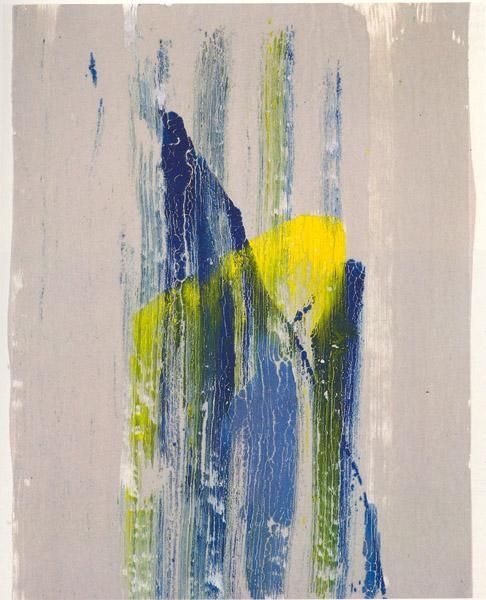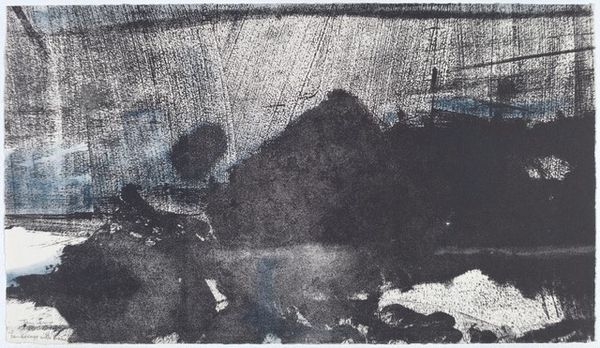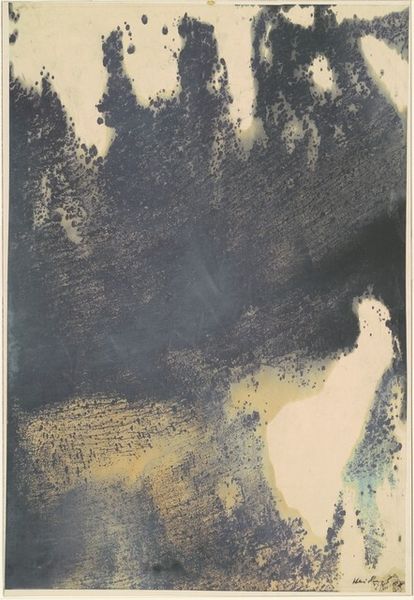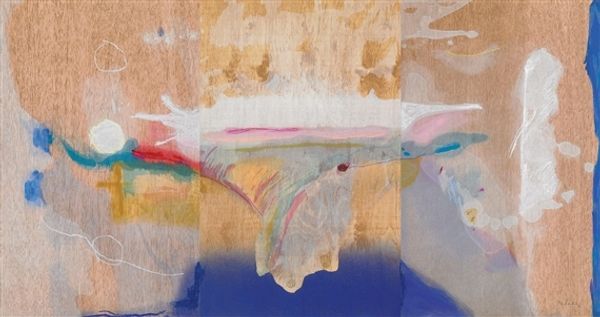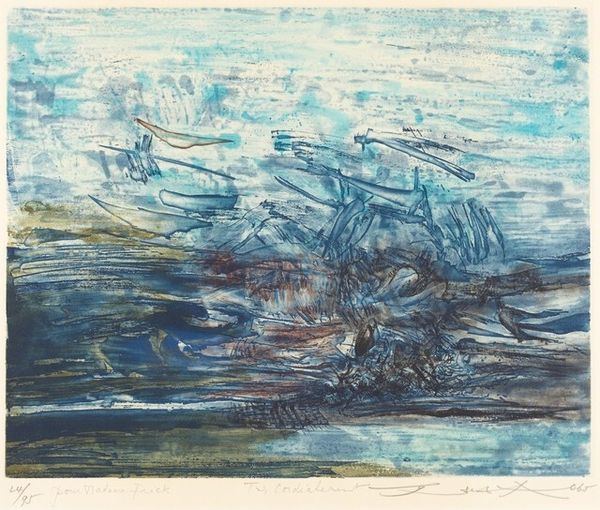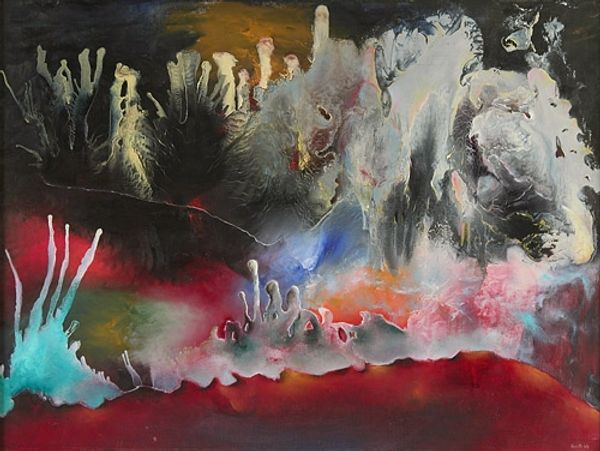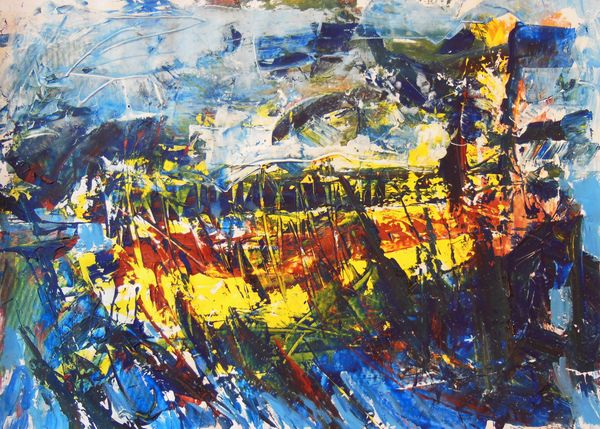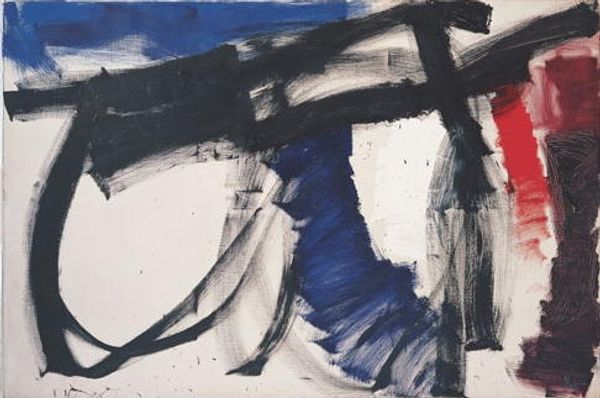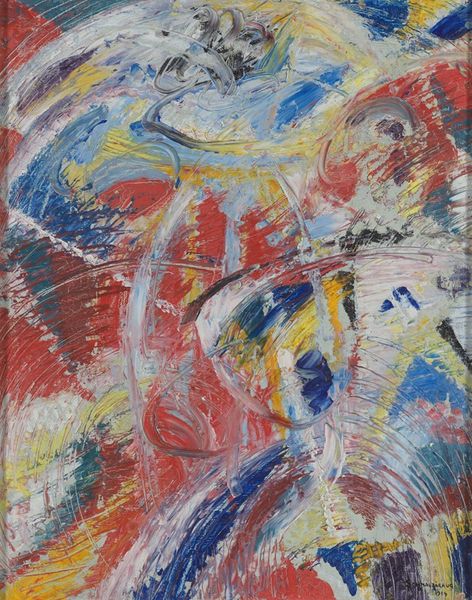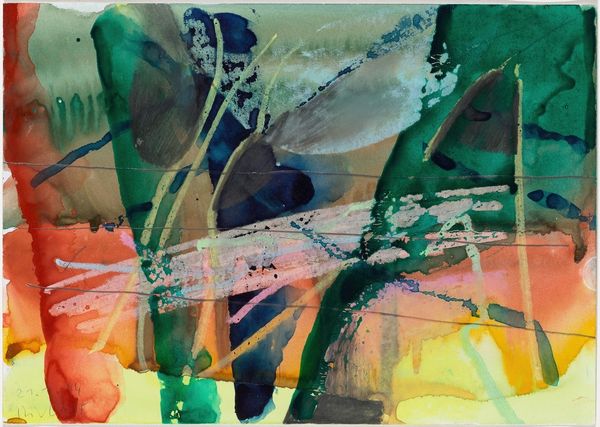
oil-paint, gestural-painting, impasto
#
abstract-expressionism
#
abstract expressionism
#
oil-paint
#
form
#
oil painting
#
gestural-painting
#
impasto
#
abstraction
#
line
Copyright: Norman Bluhm,Fair Use
Curator: This is an untitled work by Norman Bluhm, created in 1960. It exemplifies Abstract Expressionism through the medium of oil paint. Editor: It feels chaotic, almost violent. A burst of energy captured, but I also find a weird sense of melancholy within it, like a storm receding. Curator: Bluhm's work often engaged with the socio-political climate of the time. Abstract Expressionism, in many ways, was a declaration of individual freedom against the backdrop of Cold War anxieties and McCarthyism. To understand it is to grapple with the narratives of identity in an age of conformity. Editor: I see echoes of past conflicts – not in any literal sense, of course, but in the primal clash of darkness and light. The heavy blues and blacks almost seem like bruised symbols of struggle and mourning. Curator: Absolutely. Considering Bluhm's biography, his experiences during the Second World War surely shaped his artistic perspective, becoming an indelible mark within his abstraction. We might view the impasto technique not just as a formal choice, but as an embodiment of psychological weight. Editor: The white almost fighting to emerge through all those darker shades is what gives the painting such strength. The white embodies hope but is still somehow overwhelmed. Curator: Right. It mirrors larger struggles within society at the time – attempts to break free, the resilience needed in the face of oppression, but the awareness that overcoming adversity is often a brutal act, leaving a trace of damage. Editor: Do you think there’s any link to religious symbolism, any idea that we are looking at divine force manifesting within these swathes of black, blue, and white? The marks feel biblical. Curator: Interesting. It could symbolize various forms of systemic oppression from his view, but also those moments where communities resisted through collective action, mutual aid. It depends on one's lived perspective in those times. Editor: Well, regardless, viewing the work has given me much to consider, as if the image remains long after one's encounter with the painting. Curator: Indeed. Bluhm encourages us to critically examine the historical, cultural, and personal threads intertwined within this singular act of painting.
Comments
No comments
Be the first to comment and join the conversation on the ultimate creative platform.

